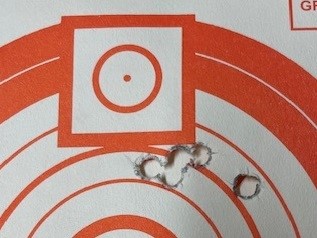Messing with (or even understanding) alloy was not in the top ten things I dealt with when I started working on cast accuracy. In the first 25 years of casting I only used #2 Lyman. In the past 2 - 2 1/2 years I started to focus on accuracy and I've been using Linotype 99% of the time.
With the off the shelf availability of #2 Lyman and Linotype from RotoMetal I knew I was working with a consistently stable material and that allowed me to focus on what I though was critical to achieving cast accuracy. For me, things like bullet to bore fit, casting methods, figuring out if a custom mold is needed trumped whether 20 to 1 was better than #2 Lyman.
In my mind I picture understand cast accuracy as going up a ladder and so far I think I've gotten past the first couple rungs of that ladder. Right now I'm trying to figure out if and how the various blends of alloy are controlled or can be controlled to improve cast accuracy.
What brought this up on my "I need to have a better understanding of this" radar screen when I started to work closely with bullet to bore fit on a bore rider and how much bullet bump I was getting with #2 Lyman versus Linotype. I was surprised that I could effect nose diameter (depending how ham handed I was in the sizing, lube gas check process.
Here's the knowledge base I'm starting with. I understand the PBB shooters all shooting 20/30 to 1 running velocities <1450fps. I rationalize that as a need for a soft alloy to assist breech seating. Since there's no gas check I'm guessing that they can do a very minimum sizing to lube the bullet without bumping the bullet size.
And I think I understand why everyone running over 1950fps are shooting Linotype. Harder metal, less leading. But many of the "in between" shooters (mostly those in Factory and Production class) with velocities running between 1500 and 1900fps are using alloy blends that I don't understand. So here goes a couple questions.
1) As a general rule do you/would you consider fussing with the type of bullet alloy you're using and what's the reasoning behind behind the effort. What are you trying to adjust for.
2) What does it mean when someone list they are using "Linotype / #2" or "Linotype / Lead". Does that actually mean they are running RotoMetals Linotype one to one with either lead or #2. I'd need to dig out my old abacus to figure out that ratio. Not sure what the hardness would be either.
3) How long do you wait to size your cast bullets. Or is that another variable that you control. Size same day if you need a bigger bullet or wait a couple weeks to keep it close.
I can hear the grey beards out there groaning at the questions but there's a lot I don't know and I'd appreciate someone explaining the use of alloy as a variable. Isn't the bottom line to get the proper bullet to freebore/leade/land fit and then to fill the bore, maximize bearing surface and sealing the gas?
The more I look at bullet to bore fit the more I think I may have underestimated the impact alloy plays in the role of cast accuracy.
I can't speak for others but in my case don't assume I know anything other than the basics such as what Pb, Sn and Sb stands for. I have about 90lbs of scrap bullets I've saved to smelt down some time in the future but haven't bit the bullet on that project yet.
All of my cast accuracy shooting is in the area of 1550 to 1800 fps with a ..308. I/m not picky about what I shoot in my .22's, 7.62's and 9MM's.
So is it even worth the effort to tinker with alloys when working towards small groups or is it just another polarizing variable where you either fall on one side of the fence or the other. Thanks, Bill Cook.
A “Measured Response” is as effective as tongue lashing a stuck door.
















